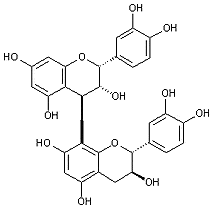What is Astringency?
Astringency is a term used to describe the tactile sensation (not flavor) that arises from the consumption of certain wines. This sensation is typically described as a puckering or drying feeling in the mouth, which is caused by the presence of tannins in wine.
Tannins are naturally occurring compounds found in the skins, seeds, and stems of grapes, as well as in oak barrels used for aging wine. They are also present in other foods such as tea, chocolate, and certain fruits. In wine, tannins are extracted during the fermentation process, and their presence can contribute to the wine’s color, flavor, and texture.
Astringency is most commonly associated with red wines, which tend to have higher levels of tannins than white wines. However, some white wines can also exhibit astringency, particularly those that have been aged in oak barrels.
RELATED: Learn About Sulfites in Wine and What They Actually Do
When tasting a wine, astringency is typically evaluated based on its intensity, duration, and balance with other flavors and sensations. A wine that is too astringent may be perceived as harsh or unbalanced, while a wine with insufficient astringency may be perceived as lacking structure or depth.
The level of astringency in a wine can also vary depending on its age, with younger wines generally exhibiting more pronounced tannins and therefore greater astringency. As a wine ages, the tannins can soften and mellow, resulting in a smoother, less astringent mouthfeel.
Scientific Explanation for Astringency in Wine
From a scientific perspective, astringency is caused by the interaction between tannins and proteins in the saliva and other molecules in the mouth.
When a wine containing tannins is consumed, these molecules bind to proteins in the saliva and other molecules in the mouth, causing them to precipitate or coagulate.
This precipitation or coagulation leads to a sensation of dryness or puckering in the mouth, as the tannins remove moisture from the tissues and create a rough or grainy texture on the tongue and gums.
In addition to proteins, tannins can also interact with other molecules in the mouth, such as lipids and carbohydrates, which can further contribute to the astringent sensation.
The level of astringency in a wine can be influenced by a number of factors, including the type and amount of tannins present, the pH of the wine, and the temperature at which it is served.

Polymeric flavan-3-ols – as the compound is scientifically called – is the biggest contributor to the level of astringency felt in a wine. Polymeric flavan-3-ols is the same compound that is more commonly referred to as “tannins” found in wine.
Understanding the science behind astringency can help wine tasters and enthusiasts better appreciate and evaluate the sensory experience of wine, as well as inform winemaking and viticultural practices aimed at achieving the desired level of astringency in the finished product.
Unique Wines Known for their Astringency
Beyond Cabernet Sauvignon, there are a range of grape varieties from more unknown regions around the world that commonly exemplify astringency.
One example is Tannat, a red wine grape variety originally from the Basque region of France and now widely grown in Uruguay. Tannat is a red-flesh grape that’s known for its high tannin content, which gives the wine its characteristic astringent mouthfeel. Despite its intensity, Tannat can also exhibit notes of dark fruit, spice, and earthiness, making it a complex and satisfying wine for those who enjoy a bold and structured taste experience.
Another example is Sagrantino, a red wine grape variety native to the Umbria region of Italy. Sagrantino wines are known for their deep color, rich flavor, and pronounced tannins, which can create a powerful and lingering astringent sensation. This intensity is balanced by notes of dark fruit, leather, and spice, which make Sagrantino a popular choice among those who appreciate a robust and full-bodied wine.
Xinomavro is a red wine grape is native to Greece and is widely grown in the northern regions of the country. Xinomavro is known for its high tannin content, which gives the wine a robust and tannic mouthfeel. The wine also features notes of dark fruit, earthy spices, and a hint of acidity, making it an excellent pairing with hearty, flavorful dishes.
Nebbiolo is grown in the Piedmont region of northern Italy and is known for producing some of the most highly prized and tannic wines in the world, including Barolo and Barbaresco. Nebbiolo wines are deeply colored and full-bodied, with high levels of tannins that contribute to the wine’s astringency. The wine also features notes of dried fruit, floral aromas, and a hint of bitterness, making it a complex and flavorful wine to savor.
Aglianico is grown primarily in southern Italy, specifically the regions of Campania and Basilicata. Aglianico wines are known for their intense tannins and astringency, which can create a mouth-puckering sensation that is balanced by notes of dark fruit, spice, and leather. The wine is typically full-bodied and rich, making it an excellent pairing with bold, flavorful dishes such as grilled meats and stews.
Moving to the white wine category, Assyrtiko is a Greek varietal from the island of Santorini known for its high acidity and mineral character. While not typically associated with astringency, some Assyrtiko wines can exhibit a pleasant and refreshing astringent sensation on the finish, which adds to the wine’s complexity and balance. Assyrtiko’s distinctive flavor profile, which can include notes of citrus, peach, and briny minerality, make it a unique and intriguing wine for those looking for something a little different.
These unique and off-the-beaten-path wines showcase the diversity of the wine world, each with its own distinctive character and flavor profile. Whether you prefer the bold and structured taste of Tannat, the deep and complex flavor of Sagrantino, or the refreshing minerality of Assyrtiko, these wines offer a unique and memorable astringent experience that is sure to delight the senses.
Astringency in Wine is Different than Acidity
All in all, think of astringency as being related to your sense of feeling, while acidity is associated with the sense of taste. Both are used to assess the flavoric nuances of a wine at varying degrees of intensity.

Is there any way to control astringency in wine making?
There are a variety of ways, one option is to use a fining agent, essentially adding protein to the wine. A chemical reaction takes place not unlike the one that occurs with your saliva during protein-based food and wine pairings. A simpler way is if a variety is known to be astringent, it’s simply better to minimize tannins during time in the extraction process. You can also leverage blending with less astringent wines.